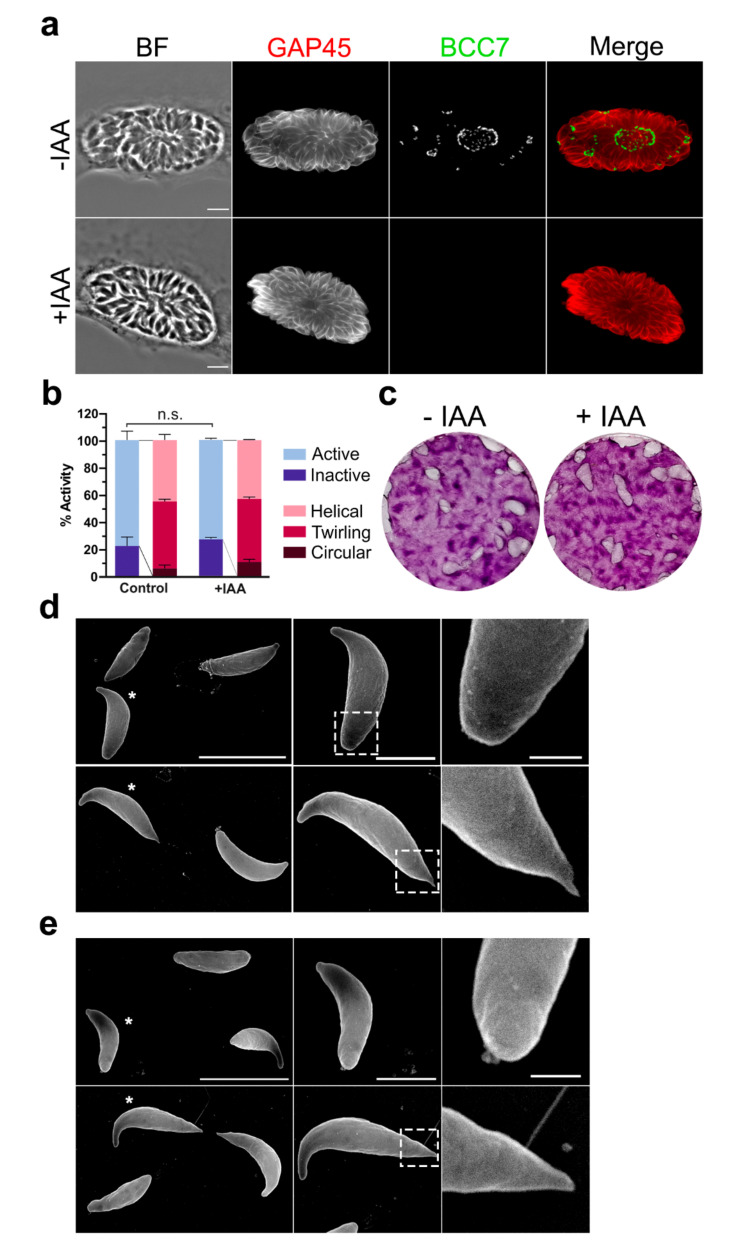Figure 3.
BCC7 is dispensable for the tachyzoite lytic cycle in vitro and does not impact on the ultrastructural organization of the basal pole surface. (a) RH_BCC7-mAID-3HA/MyoJ-2TY parasites grown in HFF cells for 48 h ± 500 µM IAA and fixed just before egress (see Movies S3 and S4). BCC7 depletion was evidenced by HA-immunostaining. No differences in the rate of progeny growing or organization as assessed by GAP45 immunostaining (red), and nuclei DAPI stain in BCC7 wild-type and BCC7-depleted parasites. Scale bar: 5 µm. (b) Graph showing no significant differences in the percentage of active and/or gliding BCC7 wild-type and depleted tachyzoite upon egress from the vacuole. Quantification was performed on the Movies S3 and S4 (mean ± Standard Error of the Mean (SEM), unpaired t-test followed by Holm–Sidak comparisons method, n = 166–313 parasites from 2–3 separate experiments, n.s.: non-significant, p-value = 0.622399). (c) Plaque formation in HFF monolayers over a 7-day infection. Relative size of the plaques showed no significant differences between BCC7 wild-type and BCC7 depleted parasites. These images are representatives of three different experiments. (d,e) Scanning Electron Microscopy (SEM) images of RH_BCC7-mAID-3HA. BCC7 expressing (d) or BCC7-depleted (e) extracellular tachyzoites did not show major ultrastructural differences of their basal pole regardless of their resting tachyzoites or acting status. SEM field overview on the left, zoom on the parasite selected with an asterisk (middle column), and a second zoom on the parasite’s basal pole (pointed square, right column). Scale bars: left: 5 µm; middle: 2 µm; right: 500 nm.

